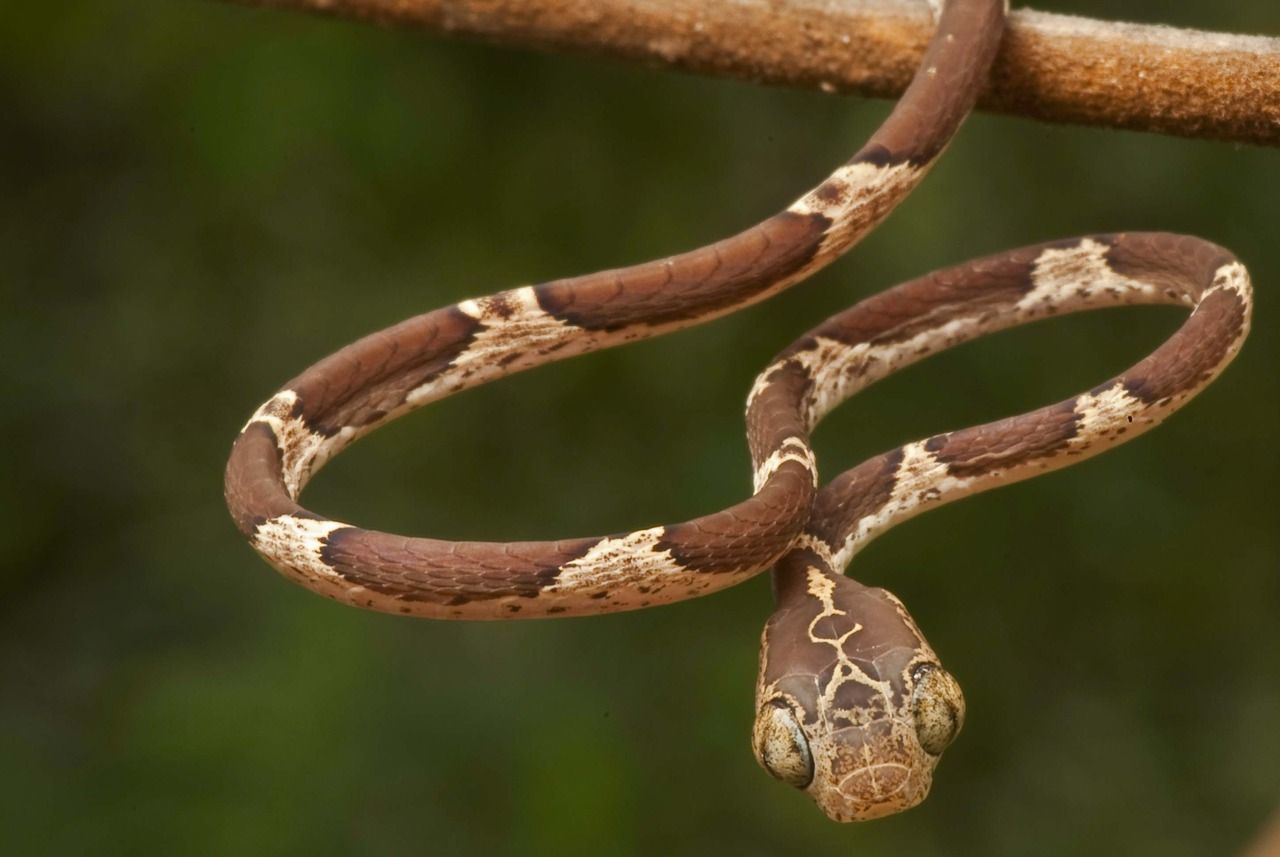
The blunt-headed tree snake, also known as the blunt-nosed tree snake, is a fascinating reptile that can be found in various parts of the world. These slender and non-venomous snakes belong to the family Colubridae and are known for their distinctive blunt-shaped heads. With their sleek bodies and arboreal nature, they have adapted to living amongst trees, making them excellent climbers.
In this article, we will explore 15 intriguing and lesser-known facts about the blunt-headed tree snake. From their remarkable physical attributes to their hunting techniques and unique behaviors, these facts will shed light on the incredible world of these serpents. So, let’s slither our way into this captivating snake species and discover what makes them so fascinating.
Key Takeaways:
- Blunt Headed Tree Snakes are cool tree-dwelling snakes found in Southeast Asia. They have a unique blunt-shaped head, are non-venomous, and love to munch on lizards and small mammals.
- These snakes are expert climbers with a cryptic coloration that helps them blend in. They’re not common pets, live for 10-15 years, and have a mild temperament.
The Blunt Headed Tree Snake is known for its unique blunt-shaped head.
These snakes have a distinct feature of having a blunt-shaped head, which sets them apart from other snake species.
The Blunt Headed Tree Snake belongs to the family Colubridae.
They are a member of the Colubridae family, which is one of the largest and most diverse snake families in the world.
They are primarily found in Southeast Asia.
The Blunt Headed Tree Snake is commonly found in countries like Thailand, Malaysia, Indonesia, and the Philippines.
They are non-venomous snakes.
Unlike many other snake species, the Blunt Headed Tree Snake does not possess venom. They rely on threat displays and camouflage to protect themselves.
These snakes are highly arboreal.
The Blunt Headed Tree Snake spends most of its time on trees, where it hunts for prey and seeks shelter.
They have an elongated body that aids in maneuvering through branches.
Their slender and elongated body allows them to easily navigate through the branches of trees, making them excellent climbers.
Blunt Headed Tree Snakes feed mainly on lizards and small mammals.
Their diet primarily consists of lizards, geckos, and small mammals such as mice and rats.
Female Blunt Headed Tree Snakes lay eggs.
After mating, female snakes lay their eggs in a hidden location, providing protection and warmth until they hatch.
They are known for their cryptic coloration.
Their skin coloration helps them blend into their natural surroundings, providing camouflage and protection from predators.
They are mainly active during the night.
The Blunt Headed Tree Snake is primarily nocturnal, preferring to hunt and explore during the cover of darkness.
Blunt Headed Tree Snakes have a lifespan of around 10-15 years.
On average, these snakes live for about 10 to 15 years in the wild.
They are not commonly kept as pets.
Due to their specialized needs and specific habitat requirements, Blunt Headed Tree Snakes are not a popular choice for pet enthusiasts.
Their population is generally stable.
The Blunt Headed Tree Snake’s population is currently considered stable, although habitat destruction and deforestation pose a threat to their habitats.
They possess a mild temperament.
Blunt Headed Tree Snakes are generally non-aggressive and tend to avoid confrontation. However, they may display defensive behavior if provoked.
Several species of Blunt Headed Tree Snakes exist.
There are different species within the Blunt Headed Tree Snake family, each with its own unique characteristics and adaptations.
Conclusion
In conclusion, the blunt-headed tree snake is a fascinating species that is known for its unique characteristics and behavior. From its distinctive blunt-shaped head to its impressive climbing abilities, these snakes have adapted to thrive in their natural habitat. Their diet primarily consists of small vertebrates, and they are non-venomous, making them harmless to humans. Despite their intimidating appearance, they are generally docile and rarely show aggression towards people.
Blending seamlessly with the trees and foliage, the blunt-headed tree snake is an excellent example of nature’s camouflage. Their ability to flatten their bodies allows them to navigate through dense vegetation effortlessly. Overall, these intriguing creatures have captivated the interest of researchers and nature enthusiasts alike, showcasing the marvels of the animal kingdom.
FAQs
Q: Are blunt-headed tree snakes venomous?
A: No, blunt-headed tree snakes are non-venomous. They are considered harmless to humans.
Q: What do blunt-headed tree snakes eat?
A: Their diet mainly consists of small vertebrates such as lizards, frogs, and small birds.
Q: Where can blunt-headed tree snakes be found?
A: These snakes are native to the rainforests of Southeast Asia, including countries like Thailand, Malaysia, and Indonesia.
Q: Do blunt-headed tree snakes have any predators?
A: While they don’t have many natural predators, larger snakes and birds of prey may pose a threat to the blunt-headed tree snake.
Q: Can blunt-headed tree snakes climb trees?
A: Yes, their excellent climbing abilities enable them to navigate through trees with ease. They are highly adapted to life in the treetops.
Was this page helpful?
Our commitment to delivering trustworthy and engaging content is at the heart of what we do. Each fact on our site is contributed by real users like you, bringing a wealth of diverse insights and information. To ensure the highest standards of accuracy and reliability, our dedicated editors meticulously review each submission. This process guarantees that the facts we share are not only fascinating but also credible. Trust in our commitment to quality and authenticity as you explore and learn with us.
